International Journal of Nanomaterials, Nanotechnology and Nanomedicine
Acid Hydrolysis-Mediated preparation of Nanocrystalline Cellulose from Rice Straw
Aminu Musa1,3*, Mansor B Ahmad1, Mohd Zobir Hussein2 and Saiman Mohd Izham1
2Advanced Materials and Nanotechnology Laboratory, Institute of Advanced Technology (ITMA), Universiti Putra Malaysia, 43400 UPM Serdang, Selangor, Malaysia
3Department of Pure and Industrial Chemistry, Faculty of Natural and Applied Sciences, Umaru Musa Yar’adua University, Katsina, Dutsin-ma Road, P.M.B 2218, Katsina 820001, Nigeria
Cite this as
Musa A, Ahmad MB, Hussein MZ, Izham SM (2017) Acid Hydrolysis-Mediated preparation of Nanocrystalline Cellulose from Rice Straw. Int J Nanomater Nanotechnol Nanomed 3(2): 051-056. DOI: 10.17352/2455-3492.000021Rice straw is available in abundance as an agricultural waste and has been used in various applications. It is utilized as a source of cellulose and is attractive in biofuels, biomedical, and other applications. The present study investigates the surface morphology, structural properties, and thermal properties of nanocrystalline cellulose (NCC) isolated by acid hydrolysis of rice straw. Surface morphology, transmission electron microscopy (TEM), structural properties, Fourier transform infrared spectroscopy (FTIR), X-ray diffraction (XRD), thermogravimetric analysis (TGA), and Energy Dispersive X-ray Spectroscopy (EDX) of the NCCs were carried out. Morphology of the rice straw changes with each chemical treatment, and TEM images confirmed that the extraction of the NCC was successful, which had a rod-like shape. A constant and dynamic reduction in the thermal stability of the NCC happened as the hydrolysis time increase, which was most likely because to the high sulfation rate. These results demonstrate an efficient route to preparing high-yield NCC.
Introduction
Rice is the most intensively planted grain crop in the world. Rice is commonly set in May and harvested in October. Rice straws represent about 45% of the intensity volume in the production of rice and accounts for the largest proportion of harvest residue. Asia is the heaviest manufacturer of rice straw, producing approximately 667.6 million tons annually, followed by Africa and Europe, which produce approximately 20.9 and 3.9 million tons per year, respectively [1]. As rice straw is a negligible feed contrasted to other cereal grain straw and hazadous when used as a fuel source because of high ash generation, investigating more reasonable contrasting options to use rice straw is a problem that need to be address, especially from an ecological standpoint. Rice straw could be utilized either as animal feed or by the papermaking industry. However, it is typically packed to be an agricultural waste because it cannot be easily converted into valuable products. As efforts are made to reduce the adverse impact on the environment, developing effective technologies for the use of straw is considered important. The primary portions of rice straw are cellulose (38.3%), hemicellulose (31.6%), lignin (11.8%), and silica (18.3%). Rice straw is the most readily accessible wellspring of agrowaste cellulosic residue in the globe [2,3].
Nanocrystalline cellulose (NCC), which is derived from natural cellulose fibers by controlled acid hydrolysis (H2SO4), is particularly appealing because of its unique properties, such as its controlled size, high specific surface area, self-assembling nature, rod-like morphology, and good dispersion. Bulk cellulose fiber does not possess these properties [4]. Hence, NCC is broadly utilized as part of different applications, for example, the reduction of metal ions and immobilization of metal nanoparticles, in view of its abundant surface hydroxyl groups [5], including enzyme immobilization, polymer reinforcement, drug delivery, biosensors, and bio-imaging. NCC has recently been produced from natural cellulose fibers such as Agave angustifolia fiber [6], sugarcane bagasse [7], chardonnay grape skin [8], rice husk [9], kenaf bast fiber [10] and onion skin [11].
Although a variety of natural fibers have been investigated in detail, the use of rice straw as a natural fiber source for the preparation of NCC as the support and stabilizing agent for metal nanoparticle synthesis has not yet been widely considered. In previous studies, a few approaches have been described for the isolation of NCC from rice straw, such as acid hydrolysis and high-speed blending [12]. These approaches have provided only low yields of NCC was found to be 6.43 % and 4.83 % for 30 and 45 min respectively.
The aim of this study was to extract cellulose fibers from rice straw using dewaxing, depulping, and bleaching processes. The preparation of NCC by acid hydrolysis (H2SO4), having high yield, good thermal stability, and generating particles with surface morphology suitable for the immobilization of metal nanoparticles for different applications, was also studied.
Experimental
Materials
In the preparation of all solutions, chemicals of analytical reagent grade and deionized water were used. Rice straw was obtained from a local farm (Bukit Tinggi, Kedah, Malaysia). Ethanol (C2H5OH) was purchased from Sigma-Aldrich (USA). Toluene (C6H5CH3, ASC, GR, EMD) and sodium chlorite (NaClO2, 80%) were purchased from Acros (USA). Potassium hydroxide (KOH) was purchased from Merck (Germany), as were glacial acetic acid (CH3COOH, 99.5%, ASC, GR, EMD) and sulfuric acid (H2SO4, 95%to98%, ACS, GR, EMD).
Dewaxing
Rice straw was cut into small pieces and thoroughly washed with tap water to remove soil and sand before being air-dried for 5 d. The dried rice straw was ground to a fine powder using a grinding machine, sieved through a 30-mesh sieve, and stored in an airtight polyethylene bag for later analysis. Twenty grams of powder was weighed and dispensed into a porous thimble, the opening of which was plugged with a piece of clean cotton wool. Then, 200 mL of toluene and 100 mL of ethanol were mixed and the powder was Soxhlet extracted for 6 h. The dewaxed powder was then dried in an oven at 60 °C.
Depulping and bleaching
The dewaxed powder was treated with 400 mL of a 4 wt.% KOH solution at 90 °C for 6 h. The treatment was repeated two times. After every treatment, the dewaxed powder was sifted and washed with distilled water. Alkali-treated rice straw was then treated with 700 mL of 1.5 wt.% NaClO2 in 80% acetic acid at pH 4.5 and 70 °C for 5 h. Then, the bleaching was repeated two times. The bleached rice straw was allowed to cool, sifted, and washed with distilled water till the filtrate pH was 7. Finally, the pure white cellulose was air-dried and stored in an airtight polyethylene bag.
Preparation of nanocrystalline cellulose
Pure white cellulose was used to prepare NCC via acid hydrolysis according to previous studies [7,13]. Acid hydrolysis was performed with 64 wt.% sulfuric acid. Five grams of cellulose was hydrolyzed with 50 mL of sulfuric acid at 45°C for 60 min under vigorous, constant mechanical stirring. The resulting suspension was diluted with 500 mL of cold distilled water, centrifuged at 15,000 rpm for 10 min, and dialyzed using a cellulose membrane in distilled water until a constant pH was achieved. Ultrasonic treatment was then carried out for 20 min, in an ice bath to avoid overheating, to disperse the nano-crystals. Finally, the aqueous suspension was freeze-dried in liquid nitrogen to obtain NCC powder.
Characterization methods and instruments
The prepared NCC was characterized using Fourier transform infrared spectroscopy (FTIR), X-ray diffraction (XRD), Field emission scanning electron microscopy (FESEM), transmission electron microscopy (TEM), thermogravimetric analysis (TGA), and Energy Dispersive X-ray Spectroscopy (EDX). FTIR spectra of the samples were obtained at ambient temperature using the KBr disk method. A disk containing 1 mg of sample was recorded within the wavenumber range of 200 to4000cm-1 using a series 100 Perkin Elmer (USA) FT-IR 1650 spectrophotometer. The crystalline structures of the prepared NCC were examined using a Philips (Netherlands) X’pert Pro P analytical PW3040MPD X-ray diffraction apparatus. Field-emission scanning electron microscopy (FESEM) from Jeol JSM-7600F (Eching B. Munchen, Germany) was used to observe the morphology of the samples. The TEM sample was prepared by dropping the sample suspension onto a Cu grid coated with a carbon film, where the specimens were negatively stained with 1% uranyl acetate and allowed to dry at room temperature. TEM image observation was carried out using a Hitachi (Japan) H-7100 electron microscope, and the particle size distributions were determined using the UTHSCSA Image Tools program (V.3.00; University of Texas Health Science Center, San Antonio, TX). The thermal behavior of the prepared NCC was recorded with a thermogravimetric analyzer TGA7 (Perkin Elmer, USA) in a nitrogen atmosphere at a heating rate of 10 °C/min from 25 to 600 °C.
Results and Discussion
Figure 1a shows the XRD patterns of the rice straw at different steps of treatment. The diffraction patterns of the rice straw, alkali treated and bleached rice straw exhibited peaks at 2θ values of 22.8°, 16.1°, 14.90 and 34.1°, respectively, which are characteristic of cellulose’s crystal structure [14,15]. However, it was found that the signal intensity from the 004, 200, and 110 planes increased from rice straw to bleached rice straw, meaning that each chemical treatment increased the crystallinity, which is in agreement with the results of previous reported by [7,13]. Similarly, figure 1b shows the XRD of Bleached rice straw and NCC at different hydrolysis time. Three cellulose I characteristic peaks at 2θ = 14.90, 16.50 and 22.80 [16], are observed in the both XRD data of the bleached and NCC at different hydrolysis time. The separation of the two peaks observed at 2θ = 14.90 and 16.50 becomes better for bleached rice straw and NCC. The intensity of peak at 22.80 corresponding to the (200) plane is considerably increased from bleached rice straw to NCC 45 in figure 1a-c, but with the increased in a hydrolysis time of 60 min, the peak intensity reduced. The calculation of the nanocrystalline cellulose diameter at different hydrolysis time are 30 , 17.2 and 11 nm for NCC30, NCC45 and NCC60 respectively, which are closely related with the measured crystal diameters obtained from TEM images. A longer hydrolysis time resulted in a shorter length NCCs and causes some damege on the crystalline structure of the cellulose. This effect has been observed by (Neto et al., 2013; Purkait et al., 2011). The yield obtained is higher than the result of NCC from rice straw reported by (Lu and Hsieh, 2012b), and lower than the NCC obtained from tomato peels (15.7%), (Jiang and Hsieh, 2015).
Field emission scanning electron microscopy (FESEM)
Figure 2a-d shows FESEM images and surface morphologies of rice straw before, after alkali treatment, bleaching treatment and after acid hydrolysis of cellulose respectively. From these four images, it is clear that the morphology of the rice straw changed with each chemical treatment. Figure 2b shows the morphology of the alkali-treated rice straw; the fiber appeared smoother than the raw rice straw. Hemicellulose was hydrolyzed and got to be water soluble. After bleaching, figure 2c shows that the fiber appeared even smoother than the alkali-treated rice straw. Figure 2d shows the defibrillated cellulose fiber in to nanoscale level by acid hydrolysis.
Transmission electron microscopy (TEM)
The term rod-like nanocrystalline cellulose is used to refer to those cellulose fibers with typical diameters around 2-20 nm and a length distribution from 100-600 nm. An illustrative TEM image of the needle-like nanocrystalline cellulose at different hydrolysis time and their histogram showing length and width distribution is shown in figure 3a-i. TEM images confirmed that the extraction of NCC from rice straw was successful, and the data of the NCC length, width and aspect ratio are shown in table 1. The reduction in the length value of NCC30 in connection to NCC45 was seen. This was expected principally to the removal of the amorphous phase during the extraction process. Comparable behavior was seen when looking at the example NCC45 and NCC60; however these decreases in length are associated to the removal, not only of the amorphous phase, as well as the incomplete destruction of the cellulose crystalline regions [17]. A comparable impact of the hydrolysis time regarding the length of the NCC was seen [11,18] for nanocrystals from onion skin and soy hulls, in spite of the fact that the rod-like structures were kept up.
Thermogravimetric analysis (TGA)
TGA was done to examine the degradation attributes of fibers at different stages of treatment. TG and DTG thermograms of rice straw, alkali treated, bleached rice straw and NCC isolated from bleached rice straw under different hydrolysis time are shown in Figure 4a-d. The thermal degradation of rice straw is a multi-stage process following different non cellulosic and cellulosic components with various decomposition temperatures are available in the untreated rice straw. It was found that the moisture and low-molecular weight compounds were removed at temperatures of approximately 100 °C. Initial weight reduction beginning at 350C and proceeding up to around 120 0C is because of the evaporation of loosely bound moisture on the surface and the intermolecular hydrogen bonded chemisorbed water. The FTIR spectrum has affirmed the presence of the moisture. The following phase of degradation starts at 2230C which is brought about by the thermal depolymerisation of hemicelluloses and the breakdown of glycosidic linkages of cellulose [19]. The third phase of degradation is liable to be connected with the lignin, which decomposes over a more extensive temperature range than cellulose and hemicelluloses. The DTG of untreated rice straw indicates two broad exothermal peaks, one at 2830C and another peak at around 3500C and goes on till 5000C. This more extensive decomposition range of lignin is a result of the of different oxygen functional groups from its structure with different thermal stabilities and their cleavage happening at varous temperatures [20].
Fourier transform infrared spectroscopy (FTIR)
Figure 5 demonstrates the FTIR spectra for rice straw, alkali treated rice straw, bleached rice straw, and NCC obtained from rice straw cellulose. From figure 5a, the dominant absorption peaks at 3345 cm-1 and 2923 cm-1 were attributed to the stretching vibrations of -OH groups and C-H stretching, respectively [21]. The absorption band at 1546 cm-1 was attributed to lignin and decreased in intensity in the spectrum of alkali treated rice straw figure 5b. The absorption peak at 808 cm-1, in both rice straw and alkali treated rice straw, was ascribed to C-H aromatic hydrogen and disappeared after bleaching, as shown in figure 4-1c. The peaks located at 1156 and 1160 cm-1 in figure 5c-d were attributed to the pyranose ring skeletal C-O-C bonds of cellulose. The prominent peak at 1040 cm-1 was identified to the structure of the hemicelluloses and cellulose.
Energy dispersive X-ray spectroscopy
EDX can give clear information about the elemental compositions of the samples. Figure 6a-c shown the EDX patterns of rice straw, cellulose and NCC, the presence of silica peak has been seen on the figure 6a due to the ash content of raw rice straw, the peak disappeared after bleaching process in figure 6b. As shown in figure 6c a small peak of sulphur on NCC is due to the presence of sulphate ester group on the NCC surface. These negative charged sulfate groups give electrostatic repulsion among individual NCC to form homogeneous and stable aqueous suspension as reported by [15]. Au peaks are also observed, which are due to Au coated grid.
Conclusion
Cellulose was obtained from rice straw by chemical purification and characterized by chemical analysis, spectroscopy, scattering, thermal and microscopic observations. NCC was effectively isolated from the obtained cellulose using H2SO4 solution while keeping the acid concentration and the reaction temperature constant and differing the hydrolysis time. FTIR results shown that the removal of non-cellulosic components from the untreated rice straw was a capable seen increment in cellulose content. The increase in crystallinity was affirmed by the XRD examination, when the reaction time was raised to 45 min. FESEM and TEM showed the morphology of NCC obtained. The morphology of the rice straw changes with each chemical treatment, and TEM images confirmed that the extraction of the NCC was successful, which had a rod-like shape. A constant and dynamic reduction in the thermal stability of the NCC happened as the hydrolysis time increase, which was most likely because to the high sulfation rate. These results indicate that H2SO4 (64 wt. %), 450C and 60 min represent the optimal preparation conditions for the hydrolysis of rice straw.
Baseed on these surveys, the average value of reaction time 40 min potentially able to produce NCC with yield about 30% and homogeneous length distribution. The yield of NCCs decreases with increases hydrolysis time and were found to be 9.34, 7.43 and 6.14% for 30, 45 and 60 min of the starting cellulose from the rice straw, respectively. The isolated nanocrystalline cellulose has great potential for various applications such as reinforcement agent in nanocomposite making and fillers for polymer matrices.
The authors are grateful to the staff of the Department of Chemistry, Institutes of Advanced Technology and Institute of Bioscience, UPM for for their technical assistance.
- Binod P, Sindhu R, Singhania RR, Vikram S, Devi L, et al. (2010) Bioethanol production from rice straw: An overview. Bioresour Technol 101: 4767-4774. Link: https://goo.gl/qoDSLO
- Lu P, Hsieh Y (2012) Preparation and characterization of cellulose nanocrystals from rice straw. Carbohydr Polym 87: 564-573. Link: https://goo.gl/mGdo5W
- Hessien MM, Rashad MM, Zaky RR, Ea Abdel-Aal, Ka El-Barawy, et al. (2009) Controlling the synthesis conditions for silica nanosphere from semi-burned rice straw. Sci Eng B 162: 14-21. Link: https://goo.gl/xWeK97
- Wu X, Lu C, Zhang W, Yuan G, Xinxing Zhang (2013) A novel reagentless approach for synthesizing cellulose nanocrystal-supported palladium nanoparticles with enhanced catalytic performance. Mater Chem A 30: 8645-8652. Link: https://goo.gl/Sl59rY
- Rezayat M, Blundell RK, Camp JE, Walsh DA, Thielemans W (2014) Green One-Step Synthesis of Catalytically Active Palladium Nanoparticles Supported on Cellulose Nanocrystals ACS Sustain Chem 2: 1241-1250. Link: https://goo.gl/yvRkwy
- Rosli NA, Ahmad I, Abdullah I (2013) Isolation and characterization of cellulose nanocrystals from Agave angustifolia fibre. Bioresources 8: 1893-1908. Link: https://goo.gl/T1je6b
- Kumar A, Negi YS, Choudhary V, Bhardwaj NK (2014) Characterization of cellulose nanocrystals produced by acid-hydrolysis from sugarcane bagasse as agro-waste. J Mater Phys Chem 2: 1-8 Link: https://goo.gl/hrd8GP
- Lu P, Hsieh Y (2012) Cellulose isolation and core–shell nanostructures of cellulose nanocrystals from chardonnay grape skins Carbohydr. Polym 87: 2546-2553. Link: https://goo.gl/oHYyJg
- Johar N, Ahmad I, Dufresne A (2012) Extraction preparation and characterization of cellulose fibres and nanocrystals from rice husk Ind. Crops Prod 37: 93-99. Link: https://goo.gl/7Z8DKj
- Hanieh Kargarzadeh, IA Ibrahim Abdullah, Alain Dufresne, Siti Yasmine, ZainudinRasha, et al. (2012) Effects of hydrolysis conditions on the morphology, crystallinity, and thermal stability of cellulose nanocrystals extracted from kenaf bast fibers Cellulose 19: 855. Link: https://goo.gl/GszgPU
- Rhim JW, Reddy JP, Luo X (2014) Isolation of cellulose nanocrystals from onion skin and their utilization for the preparation of agar-based bio-nanocomposites films Cellulose. Link: https://goo.gl/bt08GY
- Jiang F, YL Hsieh (2013) chemically and mechanically isolated nanocellulose and their self-assembled structures Carbohydr. Polym 95: 32-40. Link: https://goo.gl/912INH
- Mueller S, Weder C, Foster EJ (2014) Isolation of cellulose nanocrystals from pseudostems of banana plants RSC Adv 4 907. Link: https://goo.gl/0gVyeC
- Filson PB, Dawson-andoh BE, Schwegler-berry D (2009) Enzymatic-mediated production of cellulose nanocrystals from recycled pulp Green Chem 11 1808. Link: https://goo.gl/mIEkNF
- Lu P, Hsieh Y (2010) Preparation and properties of cellulose nanocrystals: Rods, spheres, and networkCarbohydr. Polym 82: 329. Link: https://goo.gl/X98WI1
- Dong Z, Hou X, Sun F, Zhang L, Yang Y (2014) Textile grade long natural cellulose fibers from bark of cotton stalks using steam explosion as a pretreatment Cellulose. 21: 3851. Link: https://goo.gl/8ViBGJ
- Dong XM, Revol JF, Gray DG (1998) Effect of microcrystallite preparation conditions on the formation of colloid crystals of cellulose Cellulose 5: 19. Link: https://goo.gl/QCnNk2
- Pires Neto WF, Alves H, Oliveira N, Pasquini D (2013) Extraction and characterization of cellulose nanocrystals from agro-industrial residue – Soy hulls Ind. Crop Prod 42: 480. Link: https://goo.gl/9lHB0B
- Chirayil CJ, Joy J, Mathew L, Mozetic M, Koetz J, et al. (2014) Isolation and characterization of cellulose nanofibrils from Helicteres isora plant Ind. Crops Prod 59: 27. Link: https://goo.gl/BCAUDp
- Brebu M, Vasile C (2010)THERMAL DEGRADATION OF LIGNIN – A REVIEW. Cellul Chem Technol 9: 353. Link: https://goo.gl/XjIQso
- Chen X, Yu J, Zhang Z, Lu C (2011) Study on structure and thermal stability properties of cellulose fibers from rice straw Carbohydr. Polym 85: 245–250. Link: https://goo.gl/bUqy2M

Article Alerts
Subscribe to our articles alerts and stay tuned.
 This work is licensed under a Creative Commons Attribution 4.0 International License.
This work is licensed under a Creative Commons Attribution 4.0 International License.
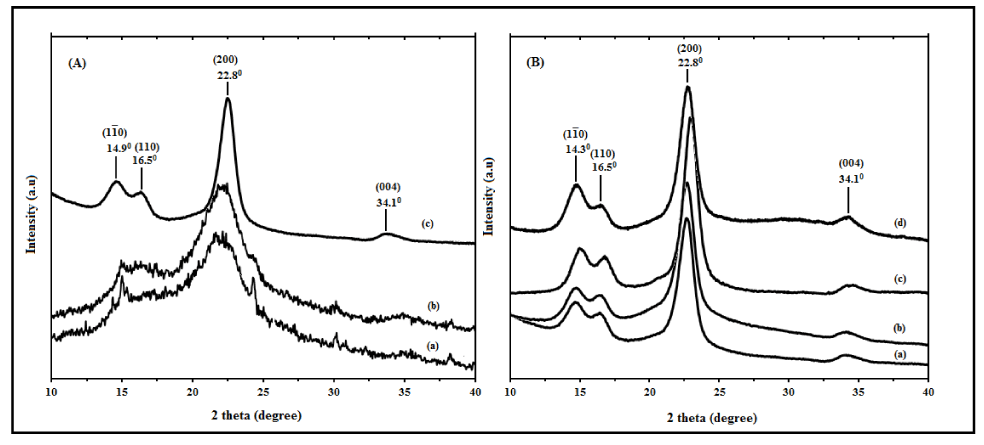
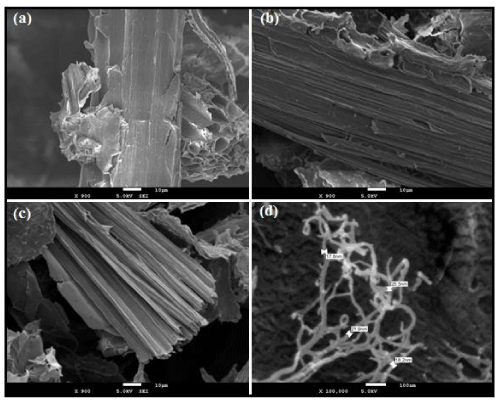
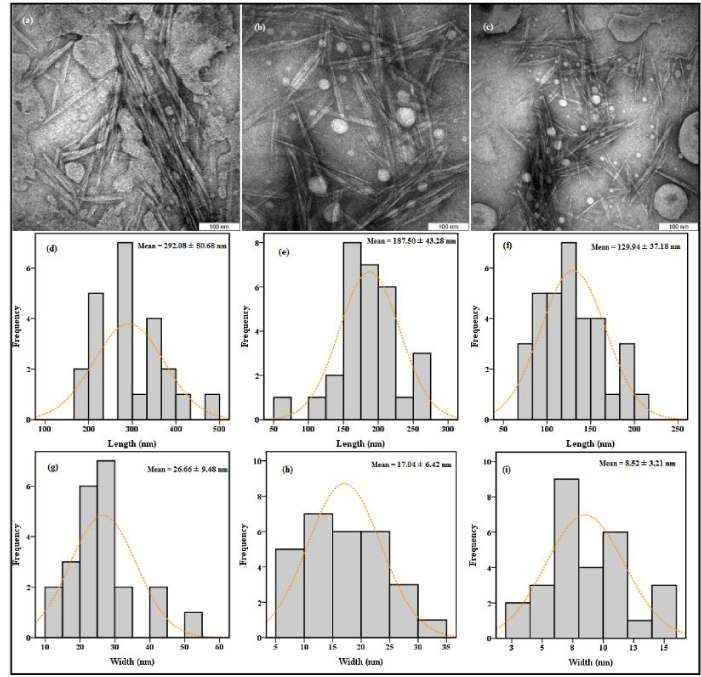
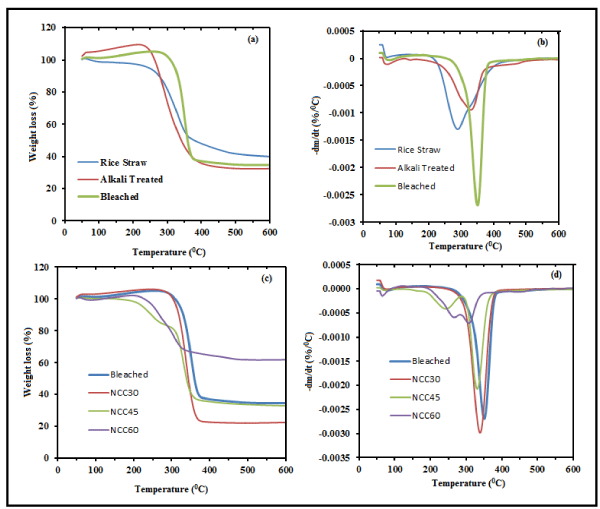
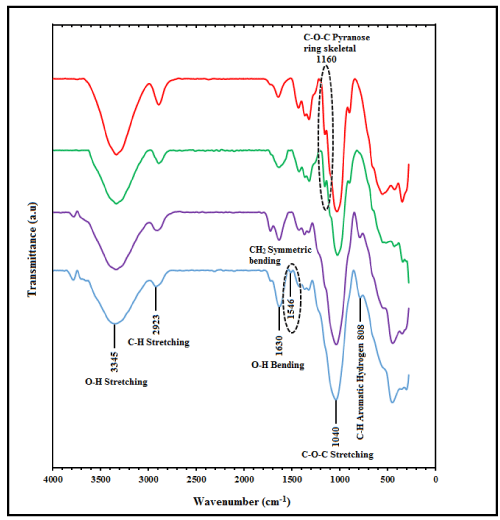
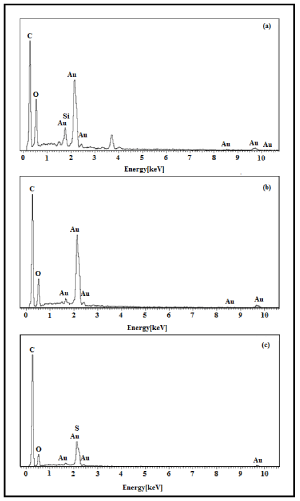
 Save to Mendeley
Save to Mendeley
